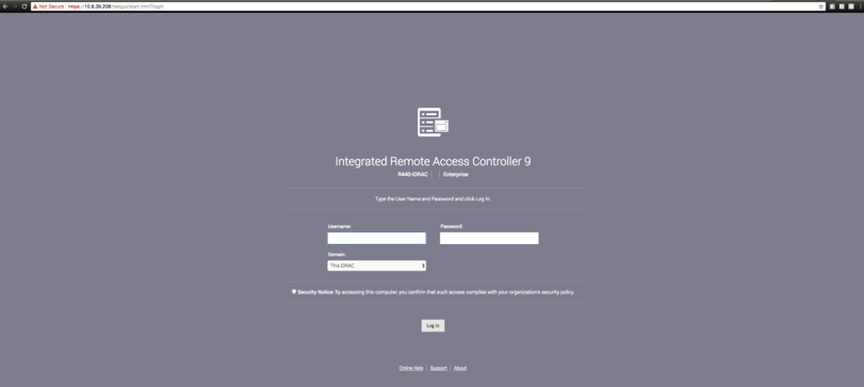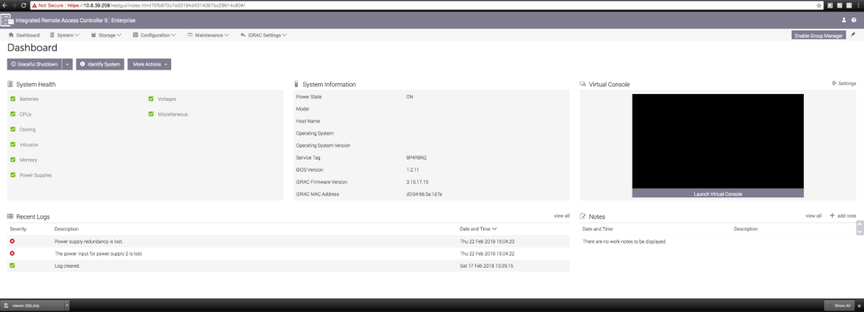Using iDRAC with a Dell R440 or R740 Server
This Chapter provides step-by-step instructions for using the integrated Dell Remote Access Controller (iDRAC) Enterprise Version to install DMF software images on Dell server hardware.
This Chapter was validated using iDRAC Enterprise. The instructions are similar for the following installation options.
- DMF Controller Release 6.3.1 on the Dell R440 Server
- Analytics 6.3.1 on the Dell R440 Server
- DMF Recorder on the Dell R740 Server
The instructions in this document tested using macOS are similar to those tested using Windows OS. You can use Internet Explorer, Chrome, or Safari browsers to access the iDRAC web interface.
Note: DMF Controller Nodes, Arista Analytics Nodes, DMF Recorder Nodes, and DMF Service Nodes using Dell R440/R640/R740 server hardware include an iDRAC Enterprise license.
Setting Up and Configuring iDRAC
Procedure
Using iDRAC to Install a DMF Controller, Analytics, or Recorder Software Image
After installing the software image using iDRAC, complete the installation and initial configuration described in this document's previous chapters.
To use iDRAC to install the software image, complete the following steps:































